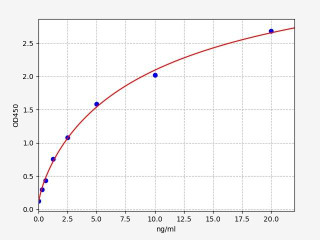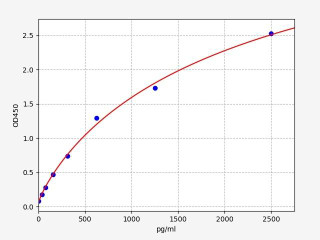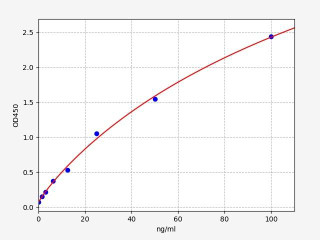Granulocytes Guide
Key Takeaways:
Table of Contents
Jump to a section:
What are Granulocytes?
Granulocytes are a crucial subset of white blood cells (leukocytes) that play a pivotal role in the immune system's response to infections and pathogenic challenges. They derive their name from the presence of cytoplasmic granules, which are specialized vesicles containing a diverse array of biologically active substances, including enzymes and immune mediators.
What is the Function of Granulocytes?
The function of granulocytes is to defend the body against infections and foreign invaders. As a crucial subset of white blood cells, granulocytes contain granules in their cytoplasm that house enzymes and chemicals, enabling them to actively participate in the immune response. Neutrophils, act as first-line defenders against bacterial infections, while eosinophils combat parasitic infections and regulate allergic responses. Basophils and mast cells are involved in allergic reactions and inflammatory responses. Together, these granulocytes execute phagocytosis, release antimicrobial substances, and modulate immune reactions, ensuring the body's protection and maintenance of overall health.
Types of Granulocytes
There are four main types of granulocytes:
1. Neutrophils
Neutrophils are the most abundant type of granulocytes. They play a crucial role in the innate immune response, particularly in defending the body against bacterial infections. Neutrophils are highly mobile and quickly migrate to sites of infection to engulf and destroy invading bacteria.
Neutrophil
-
Phagocytosis: Neutrophils are highly mobile, they quickly migrate to sites of infection through chemotaxis, a process guided by signaling molecules released by damaged tissues and immune cells. Once at the infection site, neutrophils engulf and internalize invading bacteria within phagosomes. These phagosomes fuse with lysosomes, forming phagolysosomes, where intracellular degradation and neutralization of pathogens occur. The release of antimicrobial substances and potent enzymes into the phagolysosomes effectively dismantles and neutralizes captured microbes.
-
Reactive Oxygen Species (ROS) Production: Neutrophils produce reactive oxygen species (ROS) upon activation, enhancing the bactericidal effect. These ROS include superoxide radicals and hydrogen peroxide, generated within the phagolysosomes, further enhancing the elimination of engulfed bacteria
-
Neutrophil Extracellular Traps (NETs): Beyond phagocytosis, neutrophils contribute to the immune response through "NETosis," where they release chromatin and granular contents to form neutrophil extracellular traps (NETs). These structures trap and immobilize bacteria, preventing their dissemination and facilitating their destruction.
2. Eosinophils
Eosinophils are granulocytes that are primarily involved in combating parasitic infections and regulating allergic responses. They release toxic substances from their granules, which are effective against parasites and help modulate inflammatory reactions associated with allergies.
Eosinophil
-
Parasite Defense: Eosinophils are well-known for their involvement in combating parasitic infections. When parasitic organisms enter the body, eosinophils are recruited to the affected tissues. These immune cells have a unique ability to release toxic substances stored within their granules, such as eosinophil cationic protein (ECP) and major basic protein (MBP). These toxic proteins have potent deleterious effects on parasites, efficiently eliminating them and preventing further spread within the body.
-
Regulation of Allergic Responses: Beyond their role in parasitic defense, eosinophils also have a significant impact on allergic reactions and inflammatory responses. When the immune system encounters allergens, eosinophils are recruited to the site of inflammation. Here, they contribute to the regulation of immune responses by releasing cytokines and other immune-modulating substances. Eosinophils are particularly associated with the late-phase allergic response, playing a role in chronic inflammation associated with allergic diseases like asthma.
-
Modulation of Inflammatory Reactions: Eosinophils have multifaceted functions in inflammatory reactions. While they actively participate in allergic responses, eosinophils also help modulate inflammation and prevent excessive tissue damage. Through the release of anti-inflammatory mediators, eosinophils can counterbalance the pro-inflammatory effects of other immune cells, maintaining immune balance and preventing immune overreaction.
3. Basophils
Basophils are the least numerous granulocytes and are involved in allergic reactions and inflammatory responses. They release histamine and other chemicals from their granules, contributing to the symptoms of allergies and promoting an inflammatory response to defend against certain pathogens.
Basophil
-
Release of Histamine and Chemical Mediators: Basophils possess granules filled with potent chemical mediators, including histamine, leukotrienes, and prostaglandins. When exposed to allergens, basophils are activated and release these substances into the surrounding environment. Histamine, in particular, is a key player in allergic responses. It causes blood vessels to dilate and become more permeable, leading to the characteristic symptoms of allergies, such as redness, swelling, and itching.
-
Amplification of Inflammatory Responses: Basophils also contribute to the body's inflammatory responses. They can enhance immune reactions by promoting the activation of other immune cells, such as T cells and B cells. Basophils release cytokines that facilitate communication between various immune cells, leading to the amplification and coordination of the inflammatory process.
-
Defense Against Pathogens: Basophils play a role in the defense against certain pathogens. While their primary function is associated with allergic responses, they have been found to secrete antimicrobial peptides that can help in limiting bacterial growth at the site of infection.
4. Mast cells
Mast cells are a type of granulocyte, although there has been some debate about their classification. Like other granulocytes, they contain granules with various bioactive compounds. Mast cells are tissue-resident and play a significant role in both innate and adaptive immune responses. They are particularly known for their involvement in allergic reactions and immediate hypersensitivity responses.
Mast Cell
-
Involvement in Allergic Reactions: Mast cells, when exposed to allergens, such as pollen or certain food proteins, mast cells become activated and release a variety of mediators, including histamine, heparin, and cytokines. Histamine, in particular, plays a crucial role in triggering allergic symptoms, such as itching, sneezing, and swelling, as it causes vasodilation and increased vascular permeability.
-
Immediate Hypersensitivity Responses: Mast cells contribute to immediate hypersensitivity responses, releasing pre-formed mediators upon re-exposure to sensitizing allergens, leading to severe allergic reactions like anaphylaxis.
-
Modulation of Inflammation and Immune Responses: Apart from allergies, mast cells release cytokines that regulate inflammation and interact with other immune cells. They release an array of cytokines and chemokines, which influence the behavior of other immune cells, including T cells, B cells, and eosinophils. Mast cells are integral to the crosstalk between the innate and adaptive immune systems, effectively shaping the immune response to different challenges.
Granulocytes Related Kits

| Human Lipocalin-2 / NGAL ELISA Kit | |
|---|---|
| ELISA Type | Sandwich |
| Sensitivity | 0.188ng/ml |
| Range | 0.313-20ng/ml |

| Human G-CSF / Granulocyte Colony Stimulating Factor 3 ELISA Kit | |
|---|---|
| ELISA Type | Sandwich |
| Sensitivity | 23.438pg/ml |
| Range | 39.063-2500pg/ml |
Development and Maturation of Granulocytes
The development and maturation of granulocytes, known as granulopoiesis, are vital processes that take place within the bone marrow. Hematopoietic stem cells undergo differentiation into myeloid progenitor cells, which further differentiate into specific granulocyte lineages: neutrophils, eosinophils, basophils, and mast cells. Each lineage follows distinct differentiation pathways, guided by specific transcription factors and growth factors, resulting in the acquisition of unique functional and morphological characteristics.
Granulopoiesis involves several stages, including the formation of promyelocytes, myelocytes, metamyelocytes, and finally, mature granulocytes. At each stage, granules within the cytoplasm undergo characteristic changes, and specific receptors for chemotactic factors and cytokines are acquired, enabling granulocytes to respond effectively to various stimuli.
Regulation of granulopoiesis is tightly controlled to maintain a balanced granulocyte population in the blood. Factors such as granulocyte colony-stimulating factor (G-CSF) and granulocyte-macrophage colony-stimulating factor (GM-CSF) play crucial roles in stimulating granulocyte production in response to infection or injury.
Activation and Recruitment of Granulocytes
Activation and recruitment of granulocytes are critical steps in the immune response against infections and immune challenges. Upon encountering pathogens or inflammatory signals, granulocytes are activated, allowing them to exert their defensive functions.
Activated endothelial cells at the site of inflammation express adhesion molecules, such as selectins and integrins. Neutrophils, eosinophils, and basophils, as well as mast cells in certain circumstances, interact with these adhesion molecules through specific receptors, enabling their tethering, rolling, and adhesion to the vascular endothelium.
Chemokines and other chemoattractant factors released by infected or inflamed tissues induce the directed migration of granulocytes towards the affected area. This process, called chemotaxis, allows granulocytes to move from the bloodstream into the tissues where they are needed.
The activation and recruitment of granulocytes are tightly regulated processes, ensuring an appropriate and controlled immune response to maintain tissue homeostasis and combat infections effectively.
Immature Granulocytes
Immature granulocytes, also known as band cells, are a subgroup of granulocytes that are in the early stages of maturation. They are precursors to fully mature granulocytes (neutrophils, eosinophils, and basophils) and are typically found in the bone marrow. In certain clinical conditions, such as infections, inflammation, or bone marrow disorders, an increased number of immature granulocytes may be released into the bloodstream.
The presence of immature granulocytes in peripheral blood is often reported as the "band neutrophil" count. This count is an essential parameter in the complete blood count (CBC) and can be a valuable indicator of an ongoing infection or other underlying health conditions.
Clinicians often monitor the percentage of band cells in the blood to assist in diagnosing and assessing the severity of certain illnesses. A significant increase in immature granulocytes may signal an acute bacterial infection or suggest bone marrow stress, which requires further investigation and medical attention.
Written by Lauryn McLoughlin
Lauryn McLoughlin completed her undergraduate degree in Neuroscience before completing her masters in Biotechnology at University College Dublin.
Recent Posts
-
What Are Oligodendrocytes? Functions, Markers & Disease Links
What Are Oligodendrocytes? Functions, Markers & Disease LinksOligodendrocytes are pivo …24th Sep 2025 -
Complete T Helper Cell Guide: Th1, Th2, Th17 & Functions - Your Ultimate Resource from Assay Genie
Complete T Helper Cell Guide: Th1, Th2, Th17 & Functions - Your Ultimate Resource from …27th Aug 2025 -
Apoptosis Unveiled: Your Complete Guide to Intrinsic & Extrinsic Pathways
Apoptosis Unveiled: Your Complete Guide to Intrinsic & Extrinsic PathwaysAt Assay Geni …27th Aug 2025



